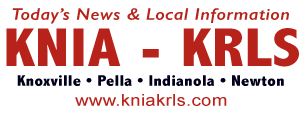
The Marion County Development Commission has released data from a survey conducted in late May of local businesses and the impact of COVID-19 on local operations.
The University of Northern Iowa is providing local summaries to help communities and organizations in understanding the crisis and to assist in recovery strategies.
According to the report, 89% of business owners and local governments reported a negative overall impact, and only 4.8% reported they had a positive impact. Respondents indicated April revenues were decreasing by about 47%, and employment levels decreasing by nearly 31%. And while still negative, many who took the survey expect a somewhat improving outlook in the coming months.
The top concerns reported were revenue loss, employee health, and cash flow, and the lowest concerns were lack of information on decision making, workforce reduction, and the impact on tax and trade issues.
In total, nearly 70 percent of businesses taking the survey applied for some form of financial assistance, including the Paycheck Protection Program (55.6%), State of Iowa assistance (21.4%), or a U.S. Small Business loan (14.3%). Among those who did apply, 92.9% say they had success with the PPP, 44.4% did so with state of Iowa programs, and 57% did so after applying for loans from local banks.
For precautions enacted since the pandemic hit, the most common have been increased sanitation (78.6%), limited size of in-person meetings (57.9%), and mask or other PPE requirements (41.3%). Only 4.8 percent of local businesses responding did not plan on precautions, and 8.7 percent said they weren’t applicable. Among the biggest barriers, the highest concern was shown for the health and safety of employees and having those individuals feel comfortable returning to work.
The number of businesses who have an online presence gerw in the country from March 17th by 7.2 percentage points by the end of May (33.3% to 40.5%).
This is the second survey conducted, with 126 responses from Marion County business owners, and 80 percent of respondents were for profit organizations, 16.7% were non-profit, and the rest represented local governments. In total, just over three-quarters of participants had fear than 25 employees.
Read the full report here.

